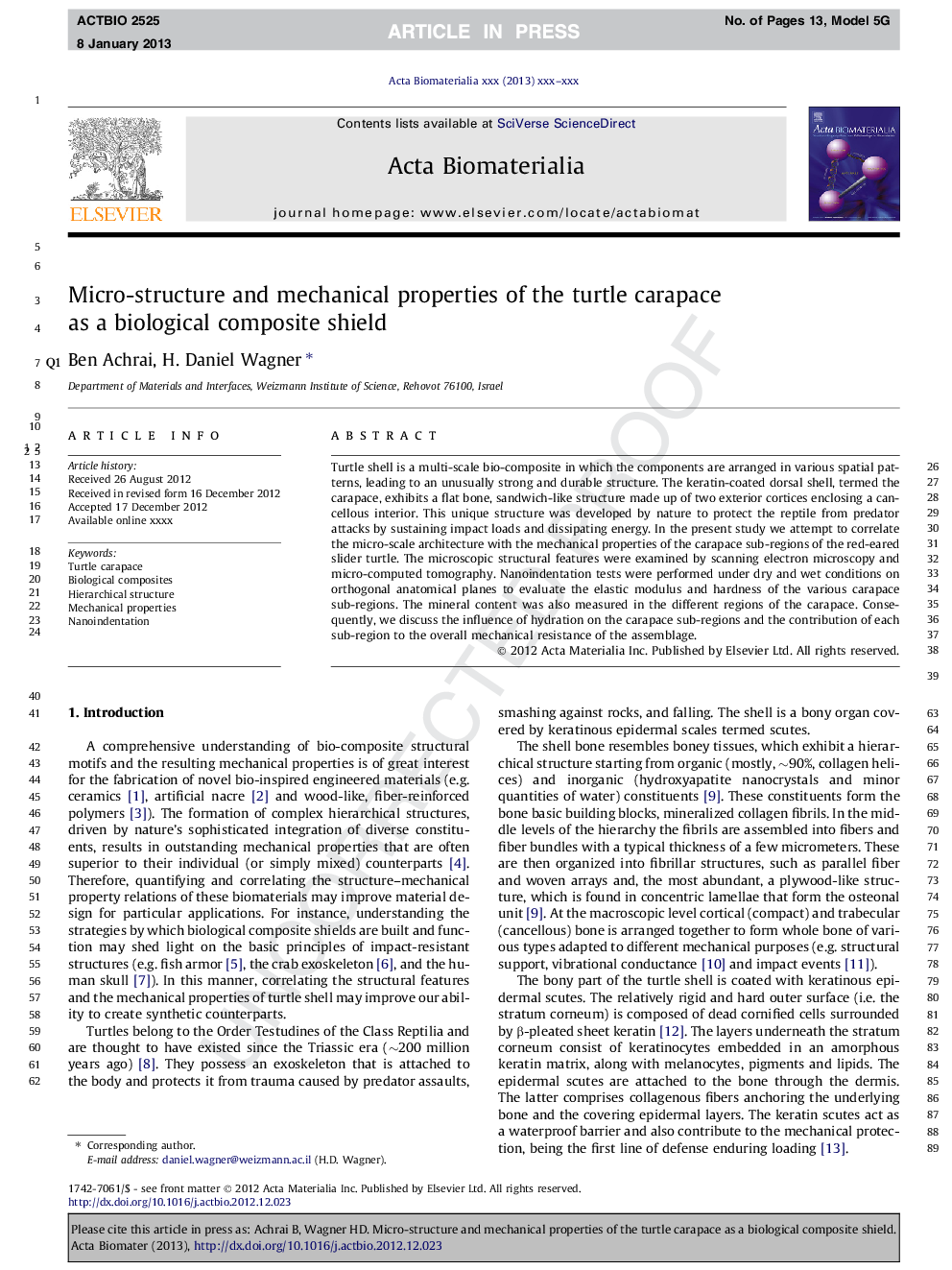| Article ID | Journal | Published Year | Pages | File Type |
|---|---|---|---|---|
| 10159831 | Acta Biomaterialia | 2013 | 13 Pages |
Abstract
Turtle shell is a multi-scale bio-composite in which the components are arranged in various spatial patterns, leading to an unusually strong and durable structure. The keratin-coated dorsal shell, termed the carapace, exhibits a flat bone, sandwich-like structure made up of two exterior cortices enclosing a cancellous interior. This unique structure was developed by nature to protect the reptile from predator attacks by sustaining impact loads and dissipating energy. In the present study we attempt to correlate the micro-scale architecture with the mechanical properties of the carapace sub-regions of the red-eared slider turtle. The microscopic structural features were examined by scanning electron microscopy and micro-computed tomography. Nanoindentation tests were performed under dry and wet conditions on orthogonal anatomical planes to evaluate the elastic modulus and hardness of the various carapace sub-regions. The mineral content was also measured in the different regions of the carapace. Consequently, we discuss the influence of hydration on the carapace sub-regions and the contribution of each sub-region to the overall mechanical resistance of the assemblage.
Related Topics
Physical Sciences and Engineering
Chemical Engineering
Bioengineering
Authors
Ben Achrai, H. Daniel Wagner,
